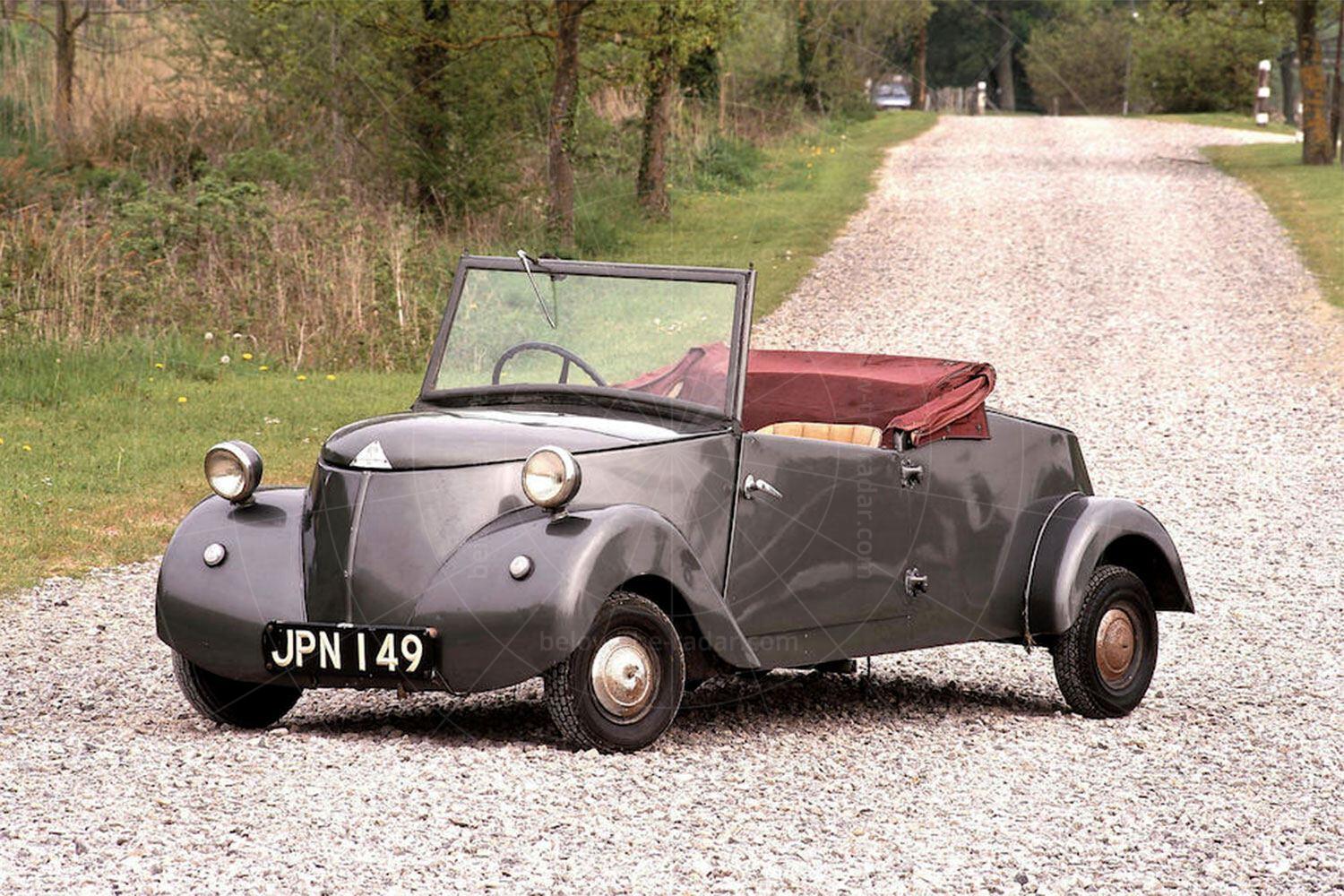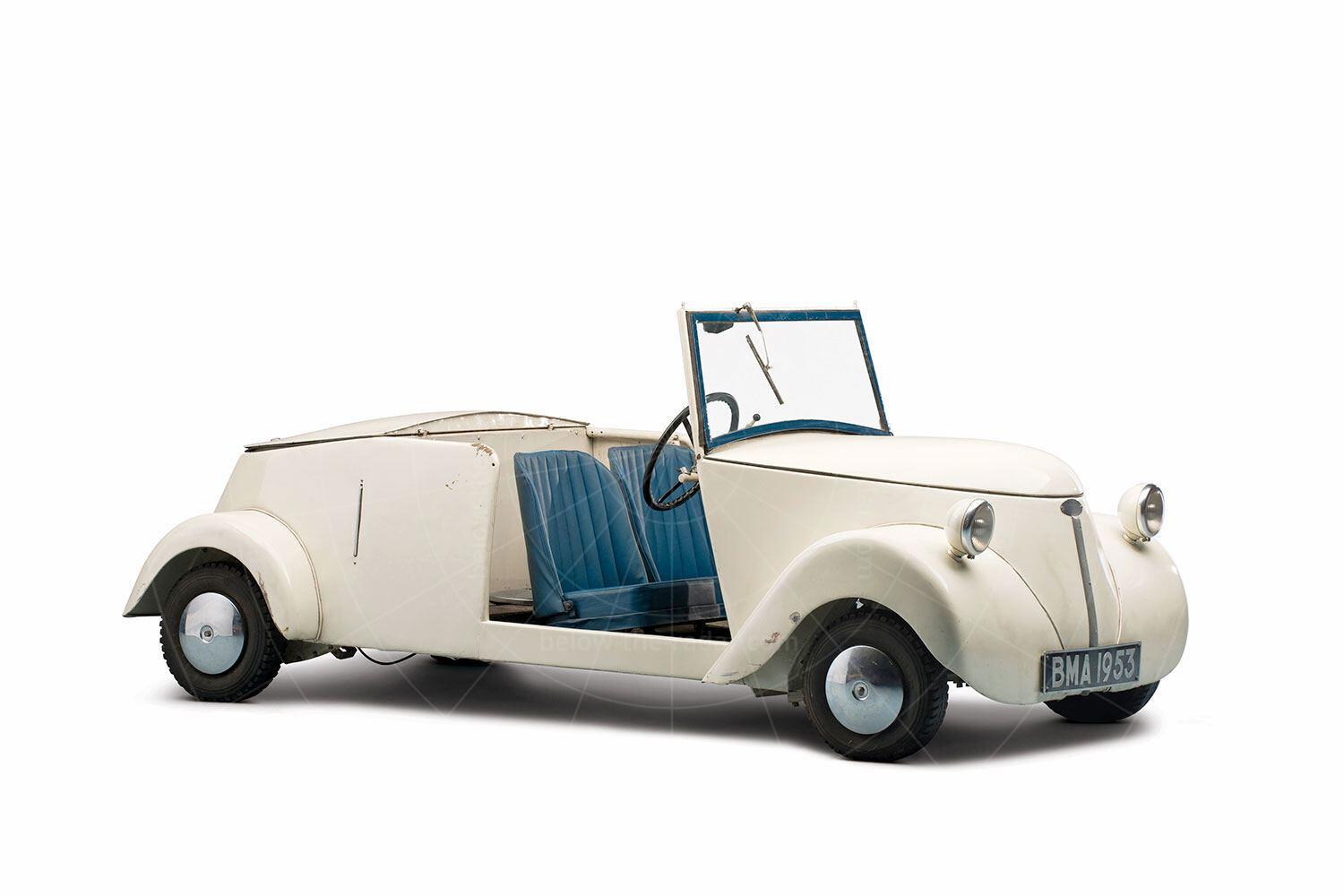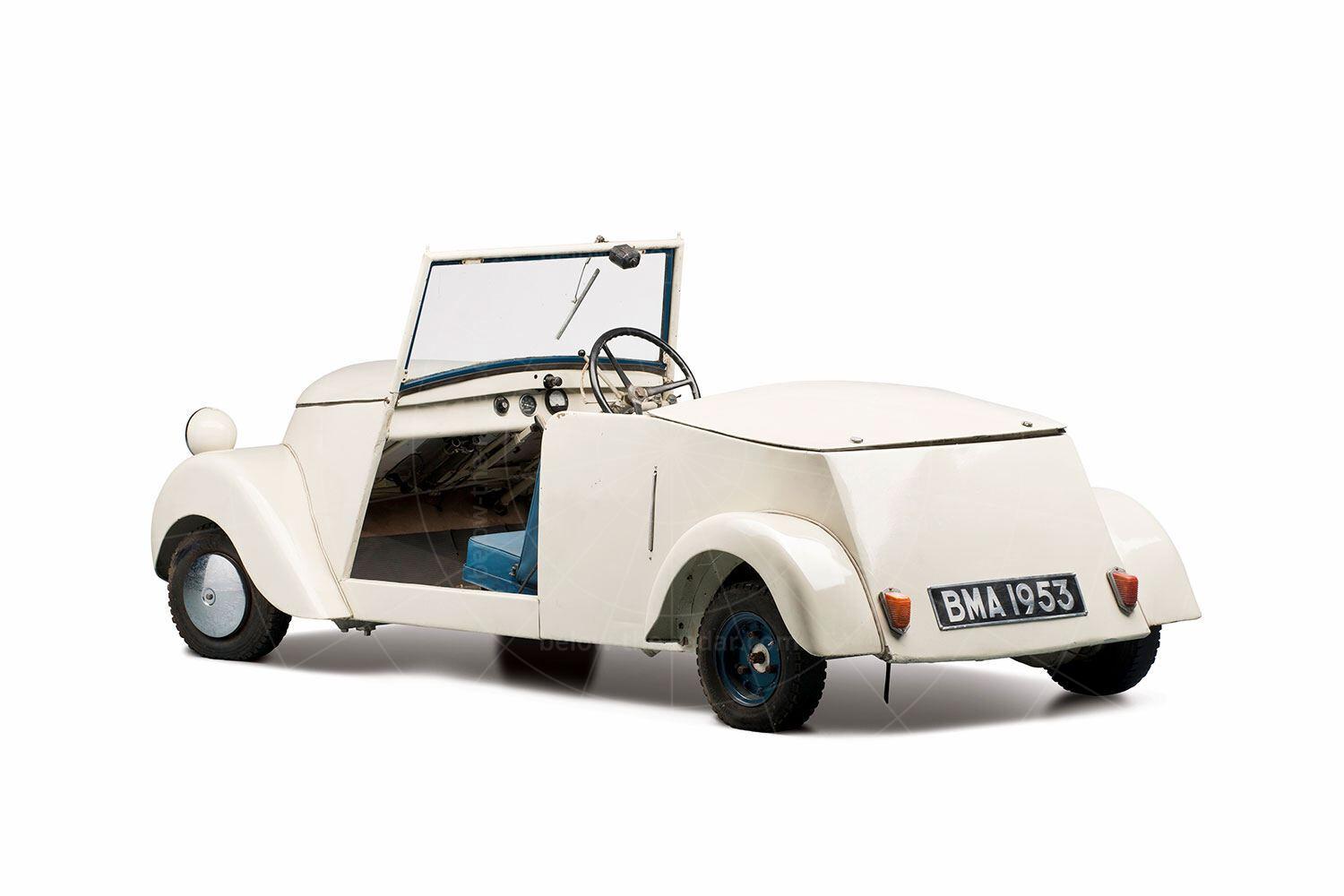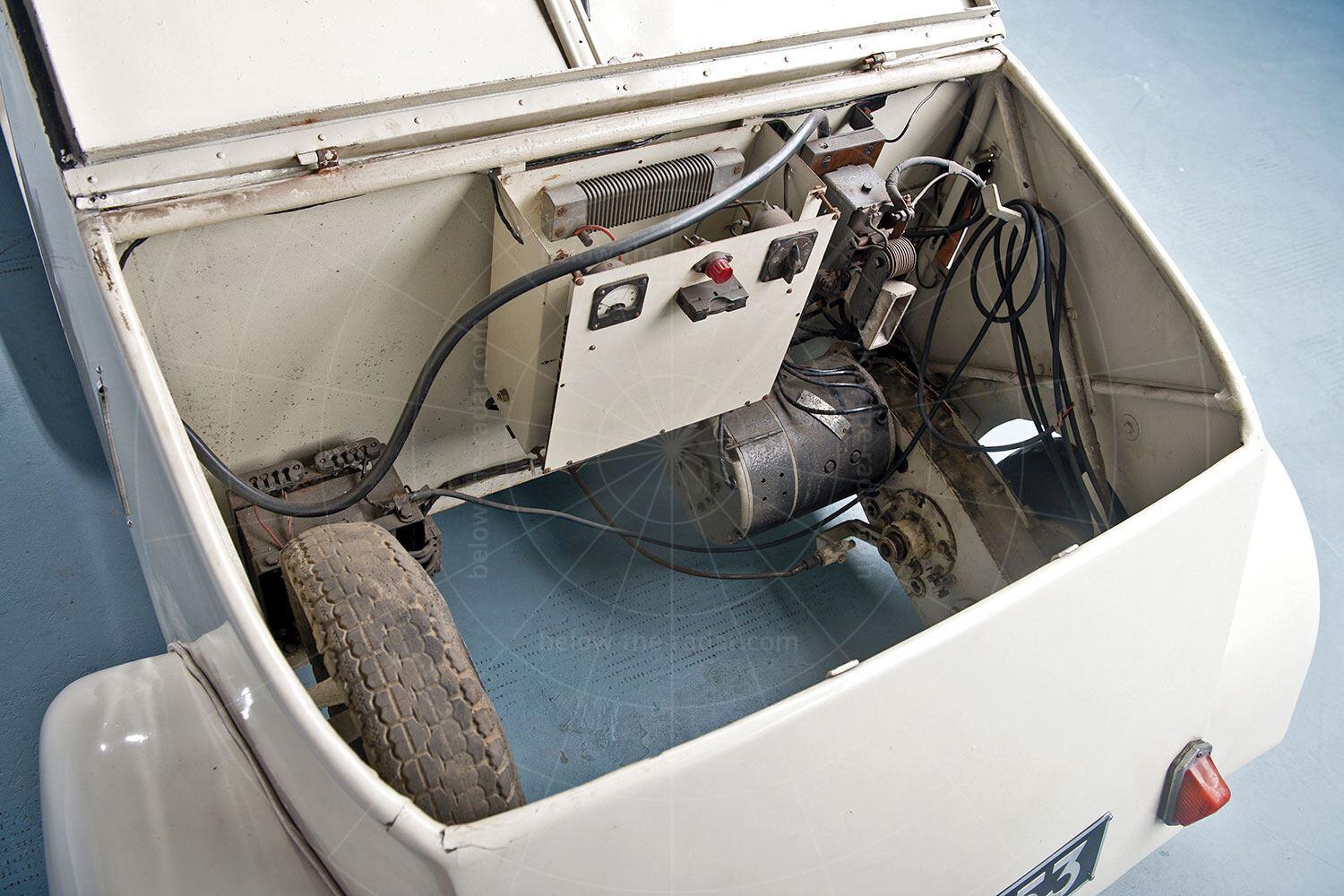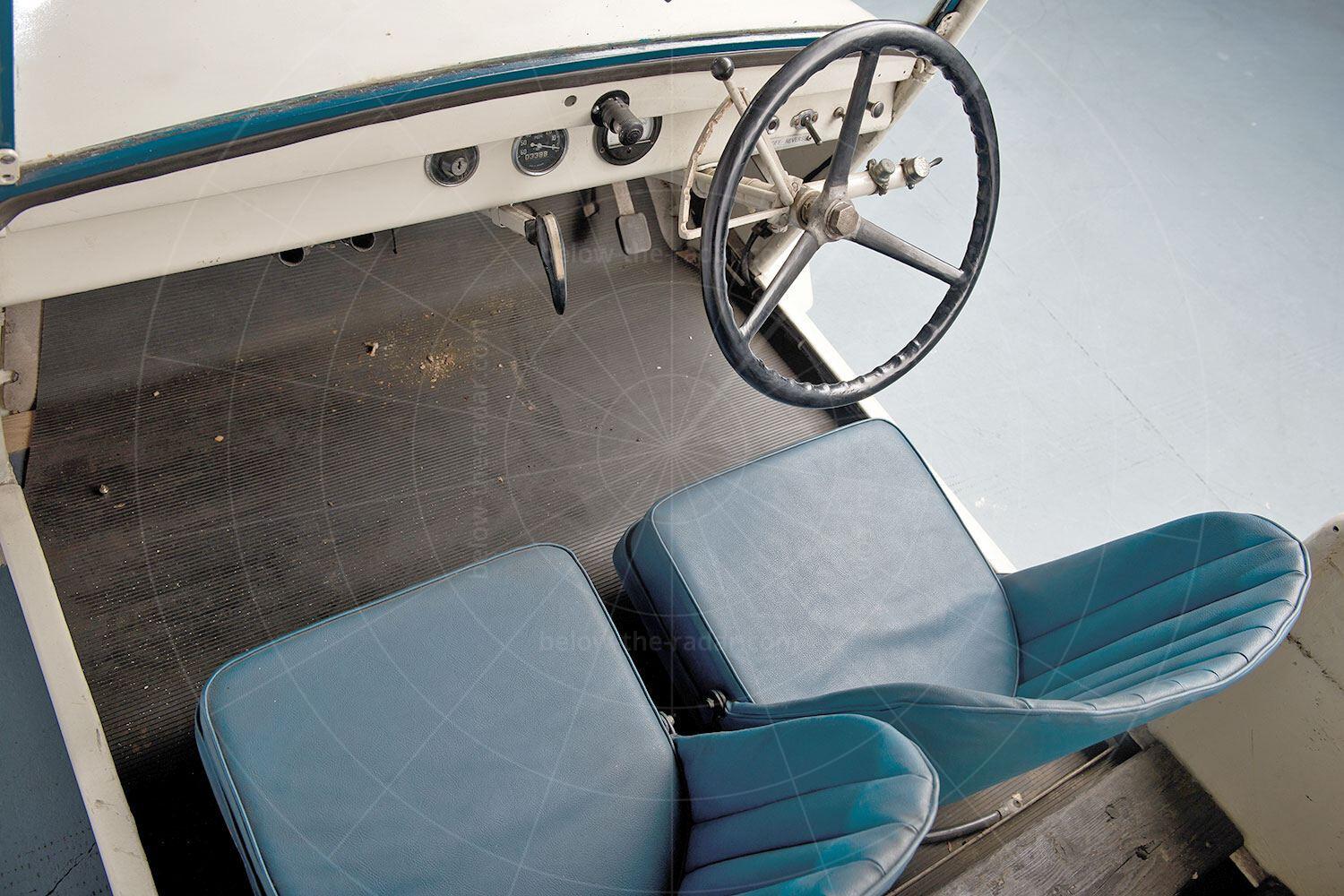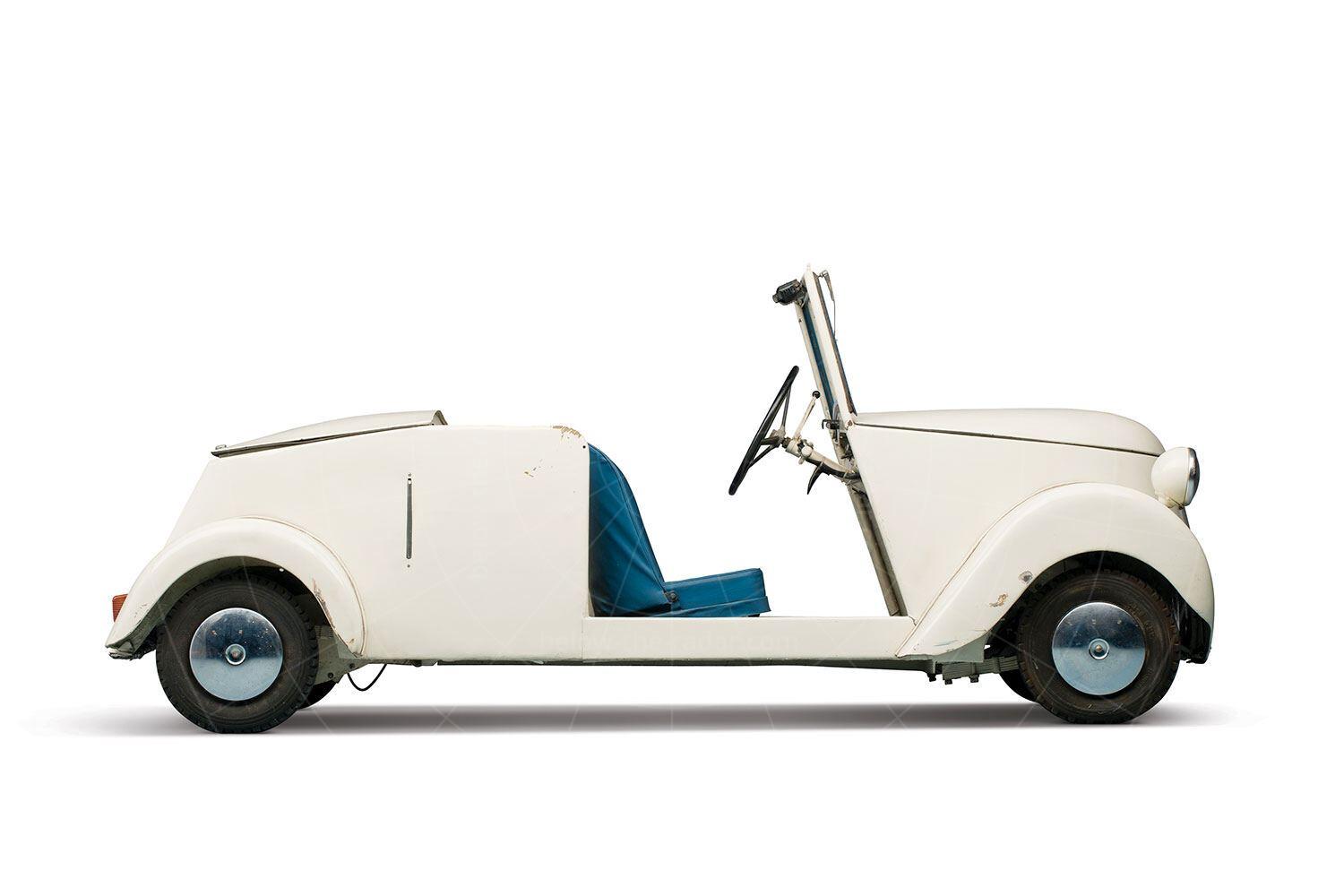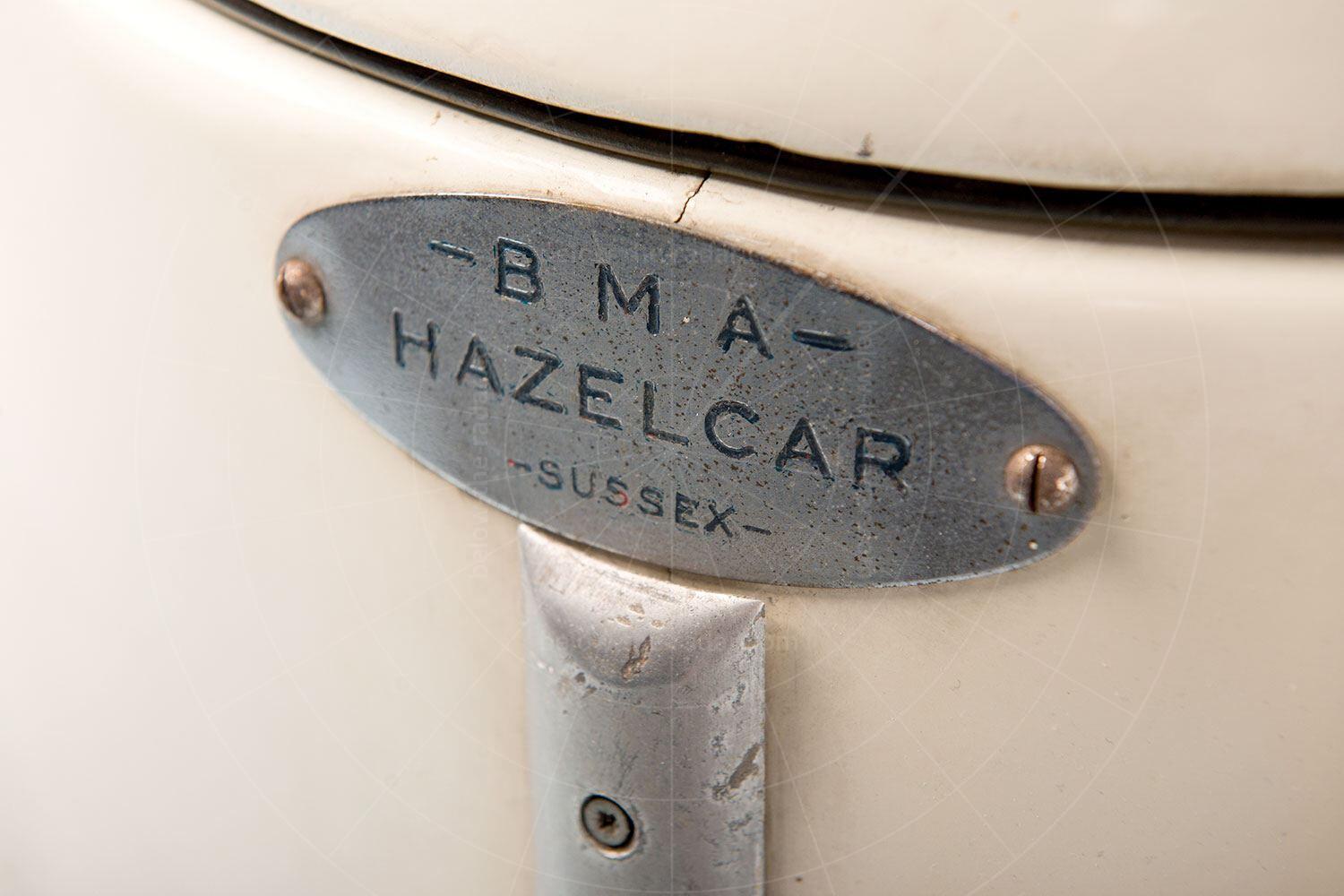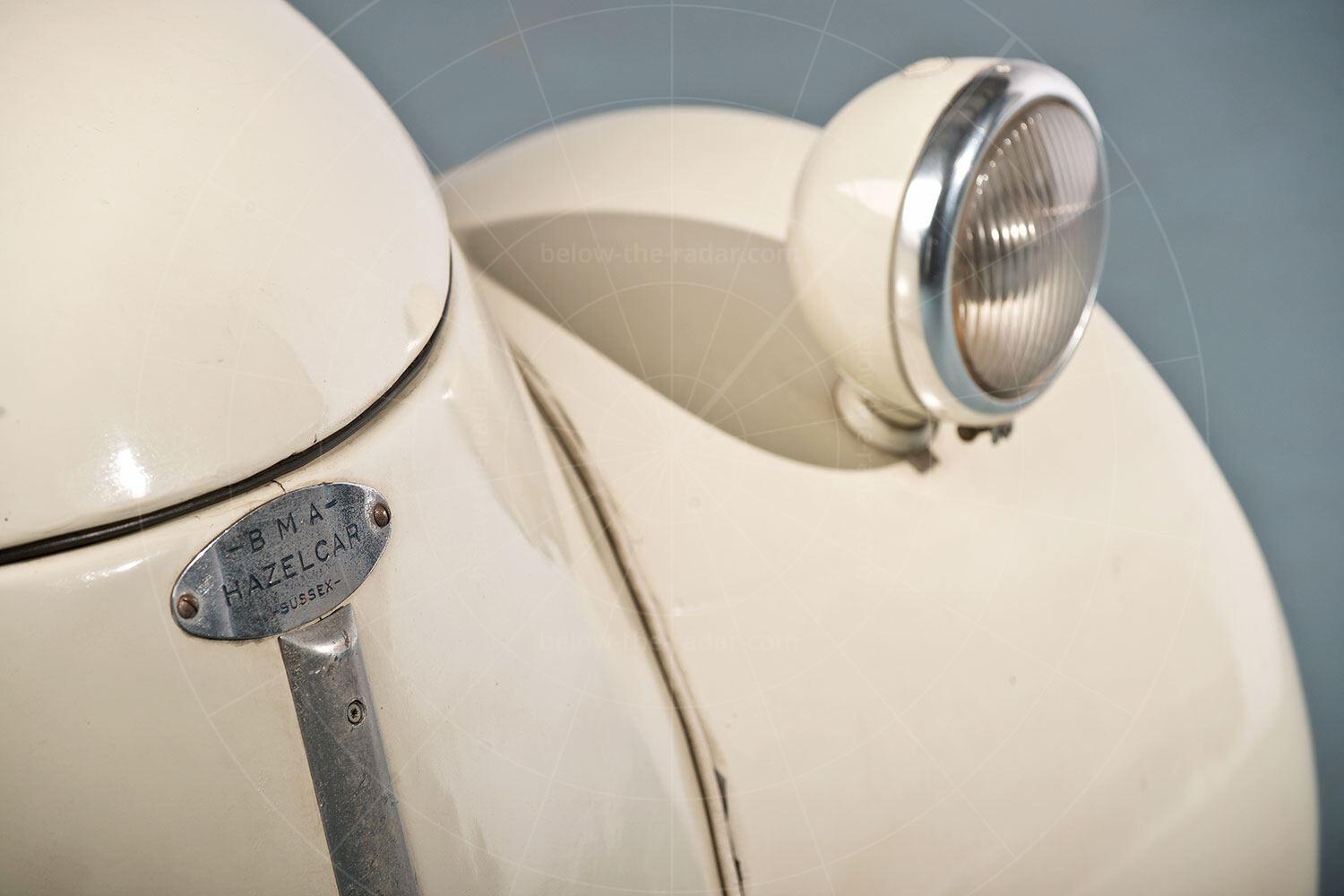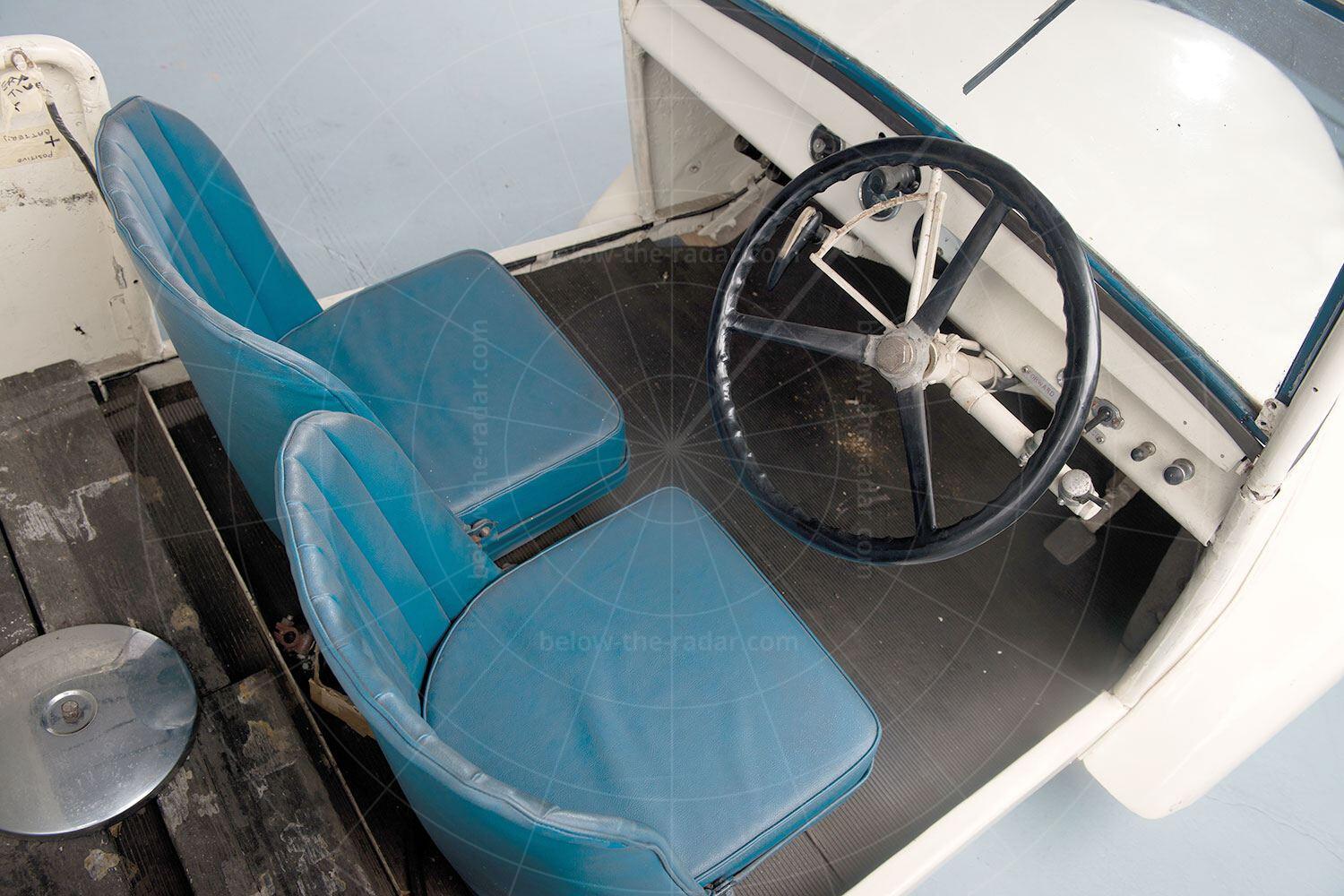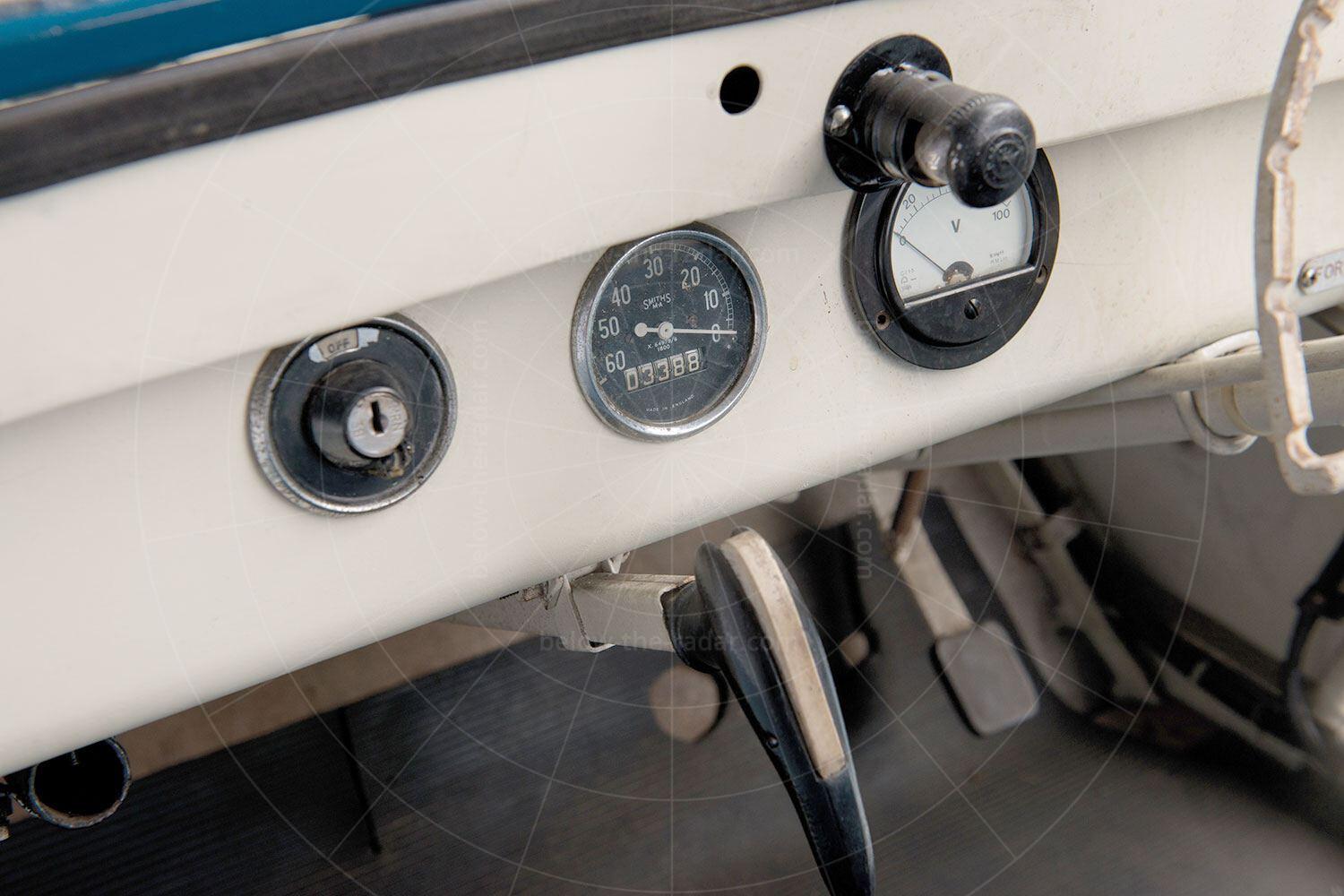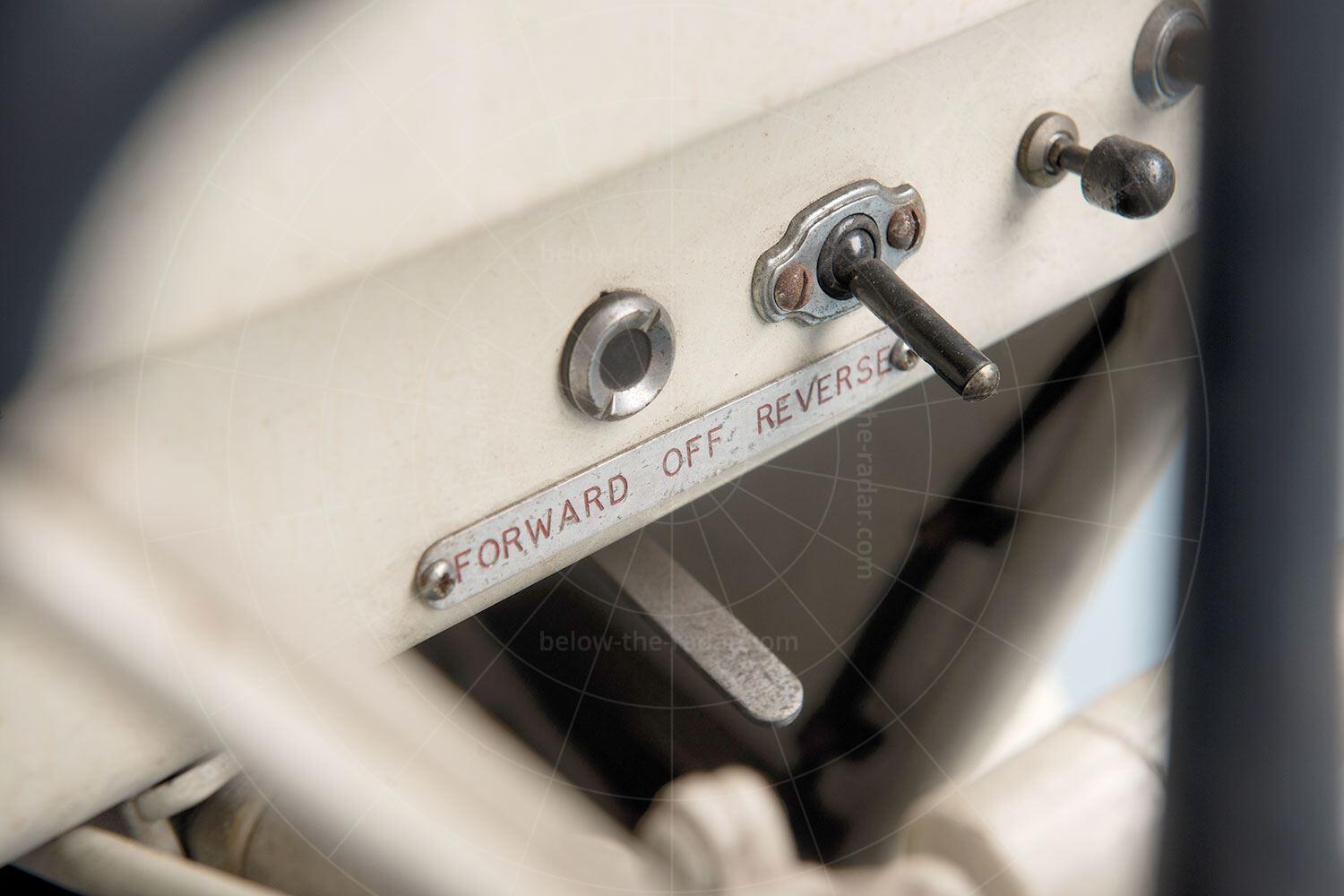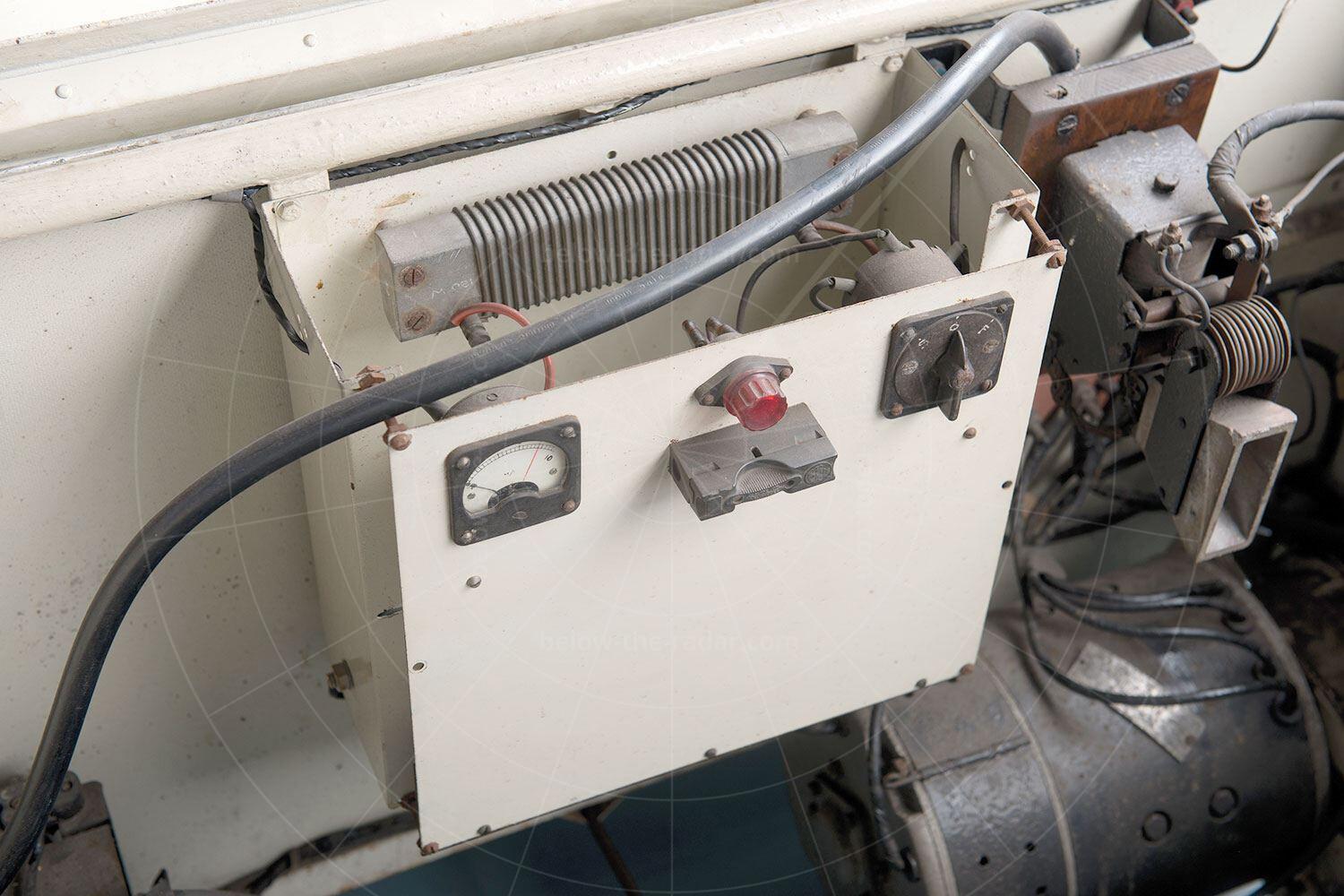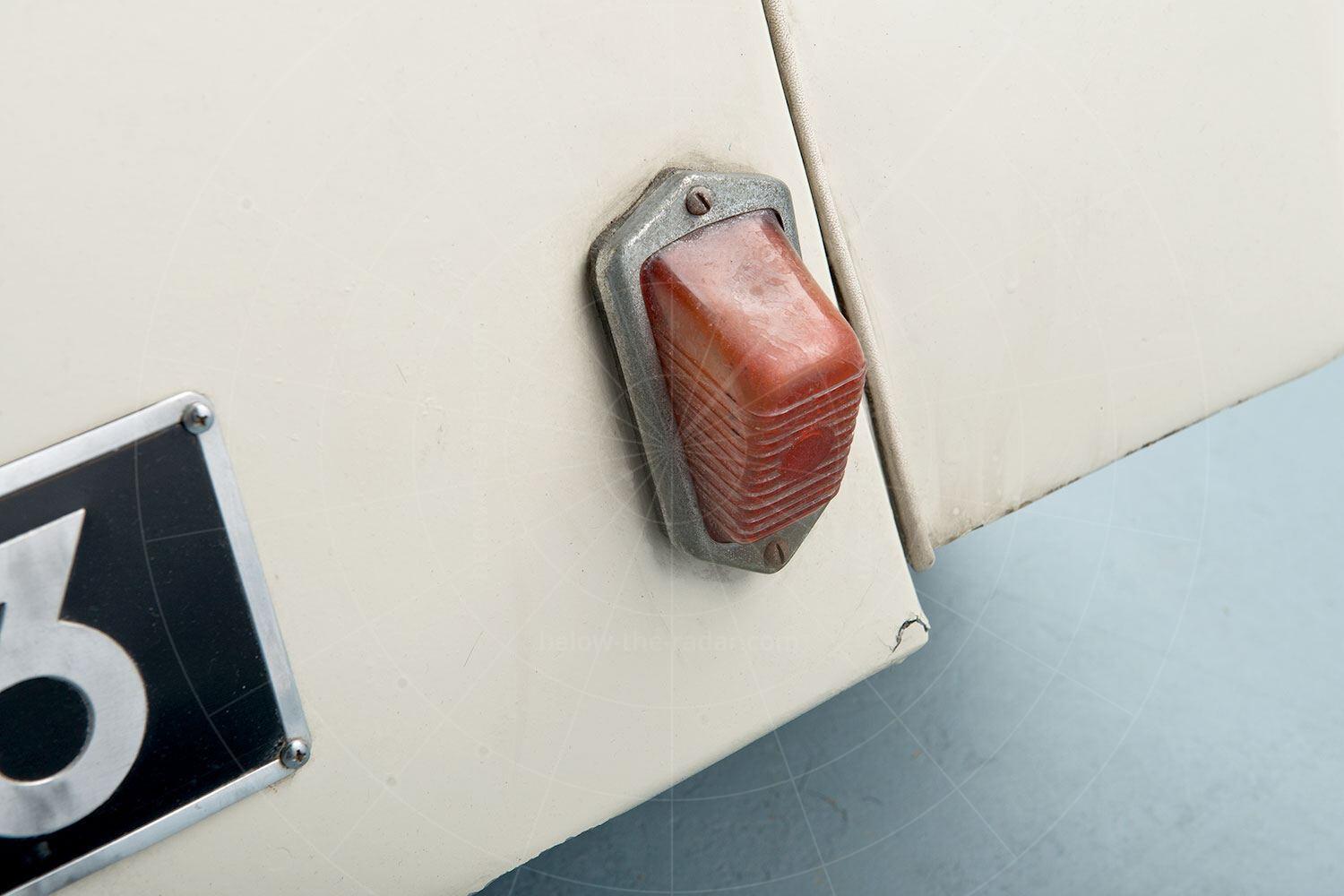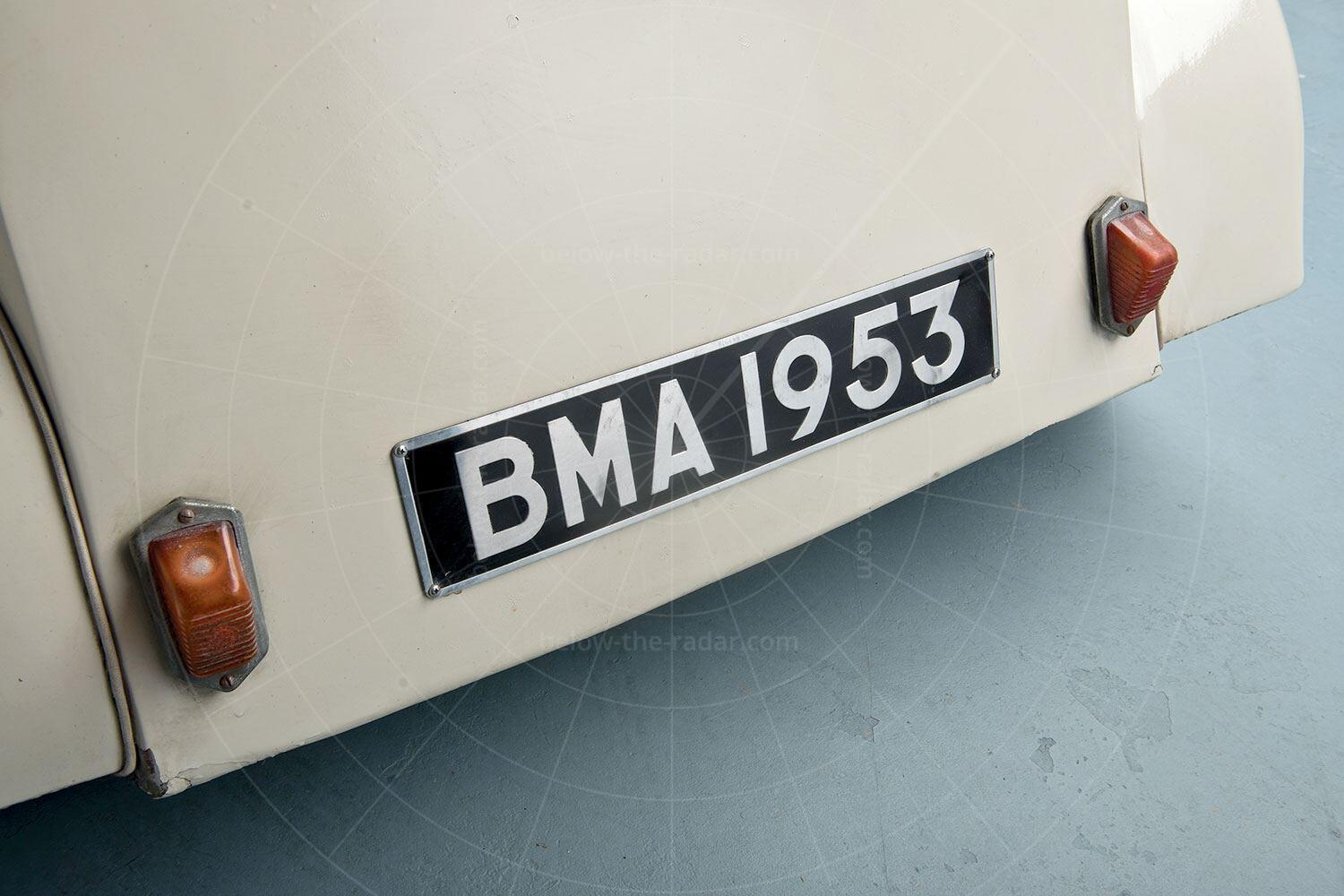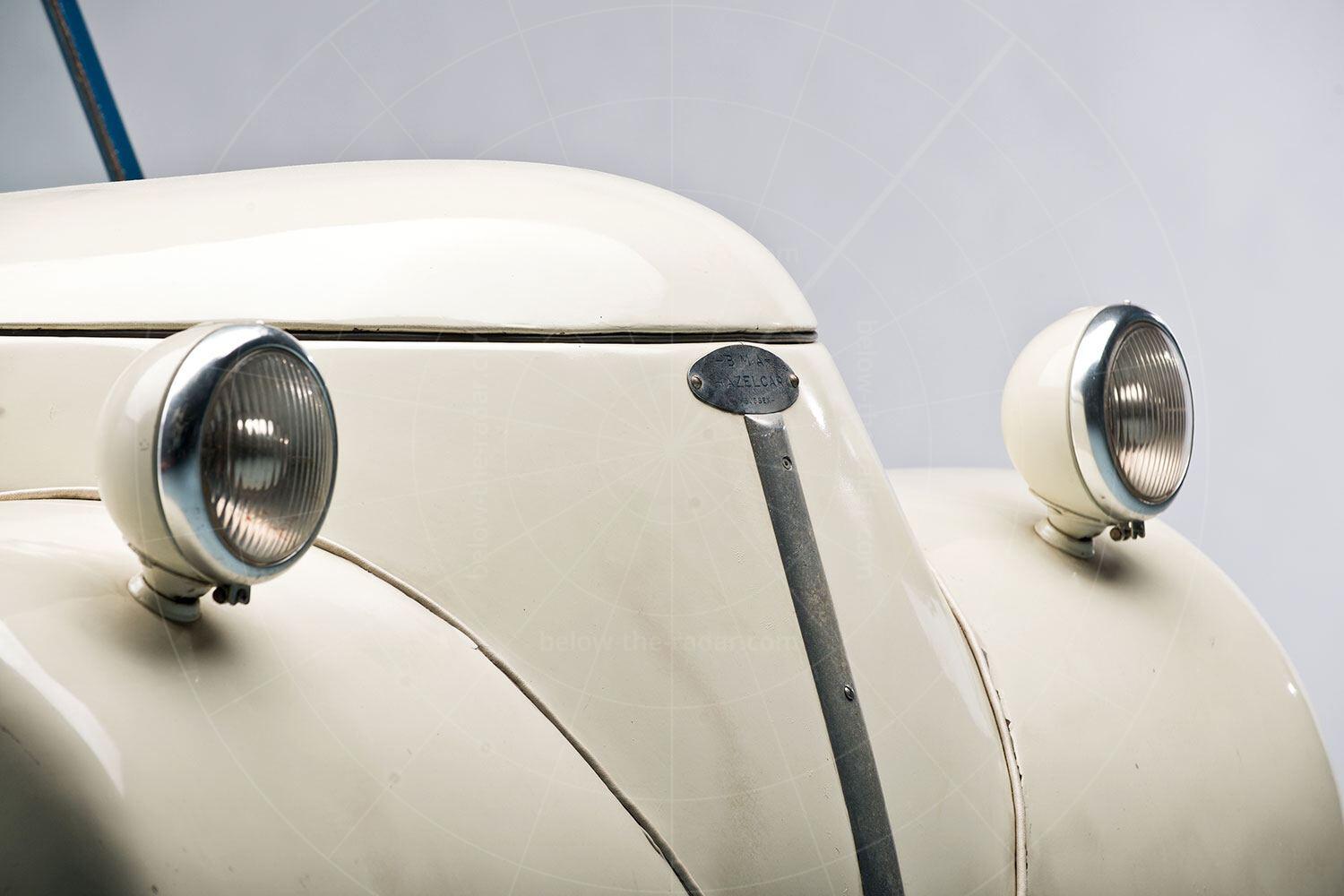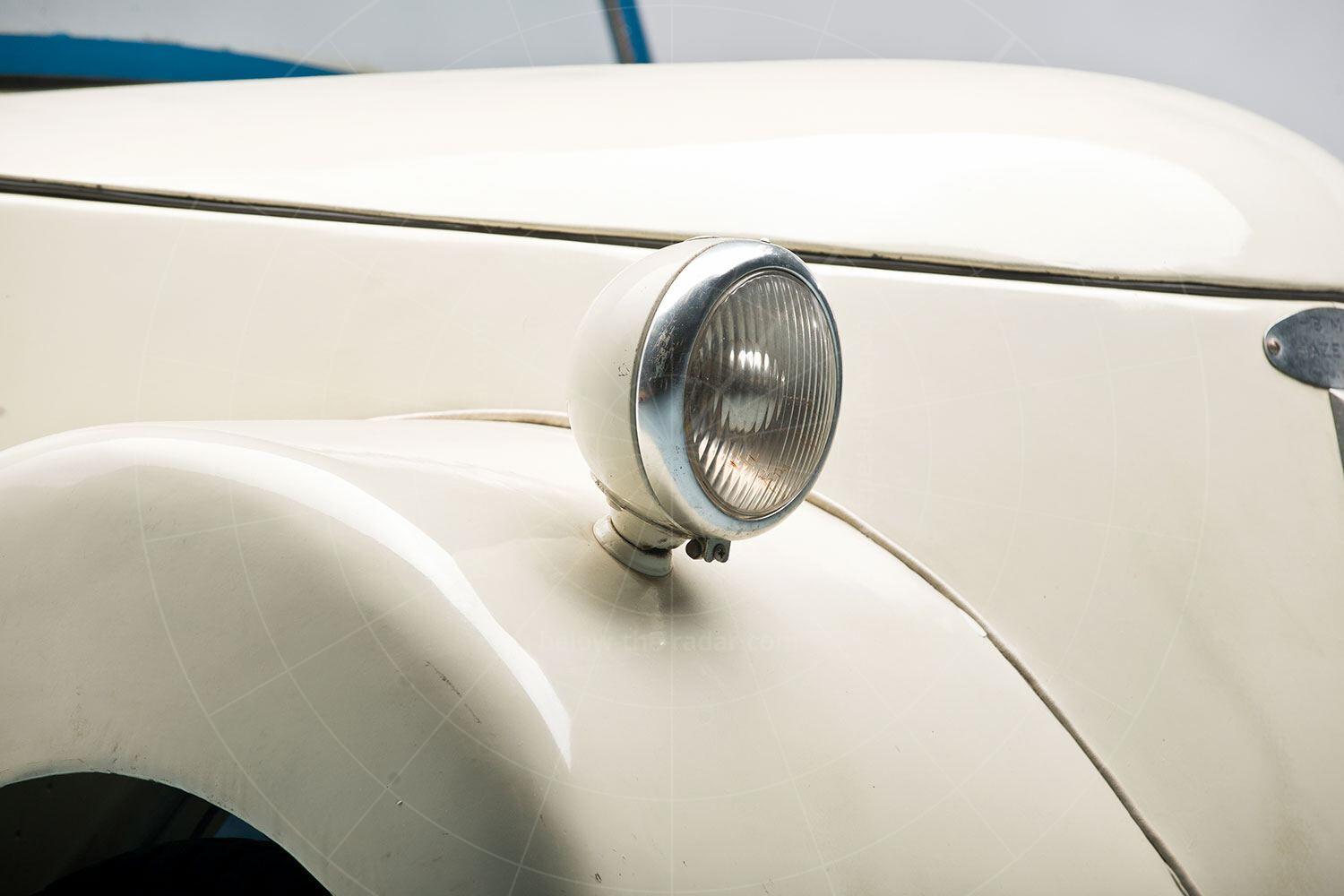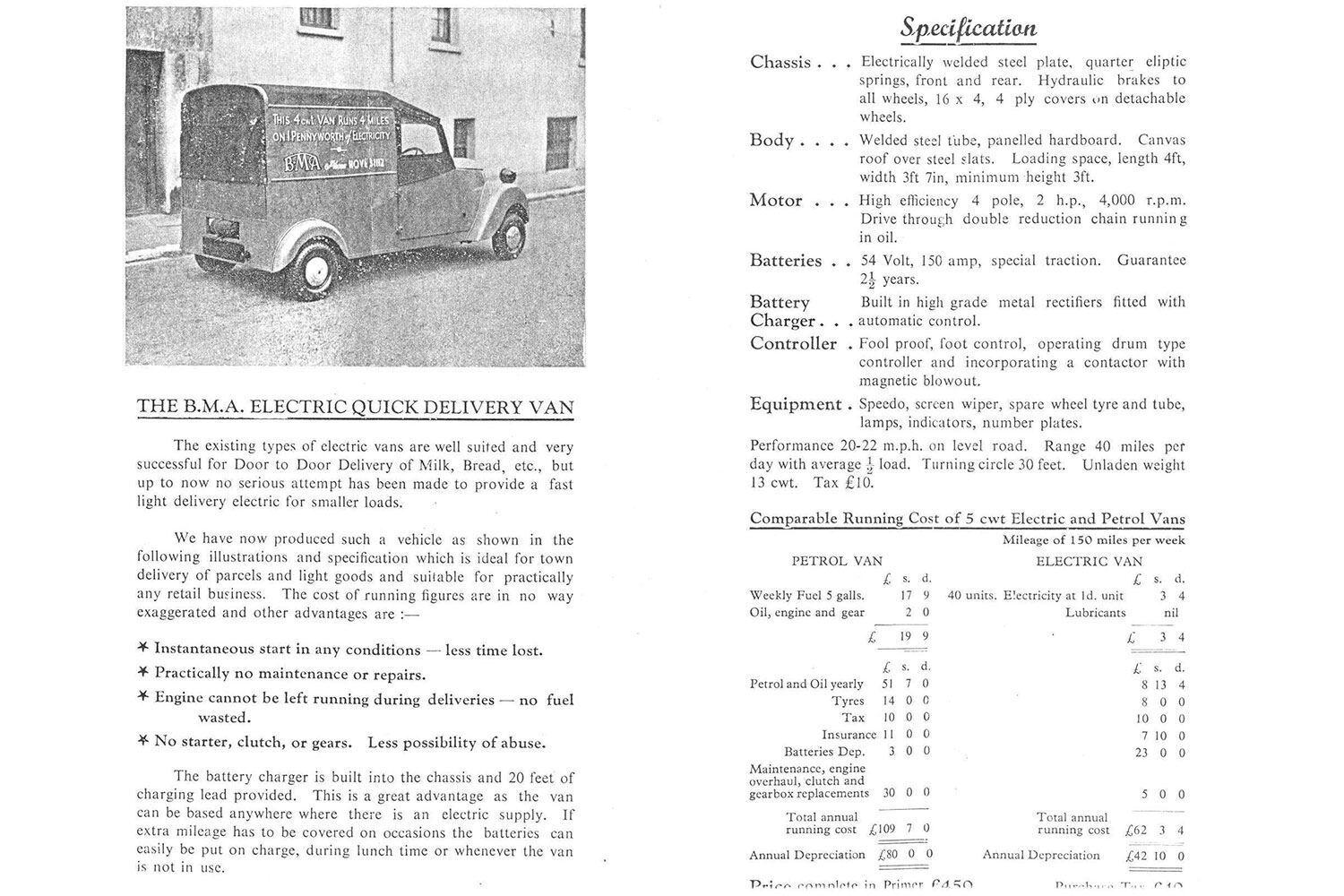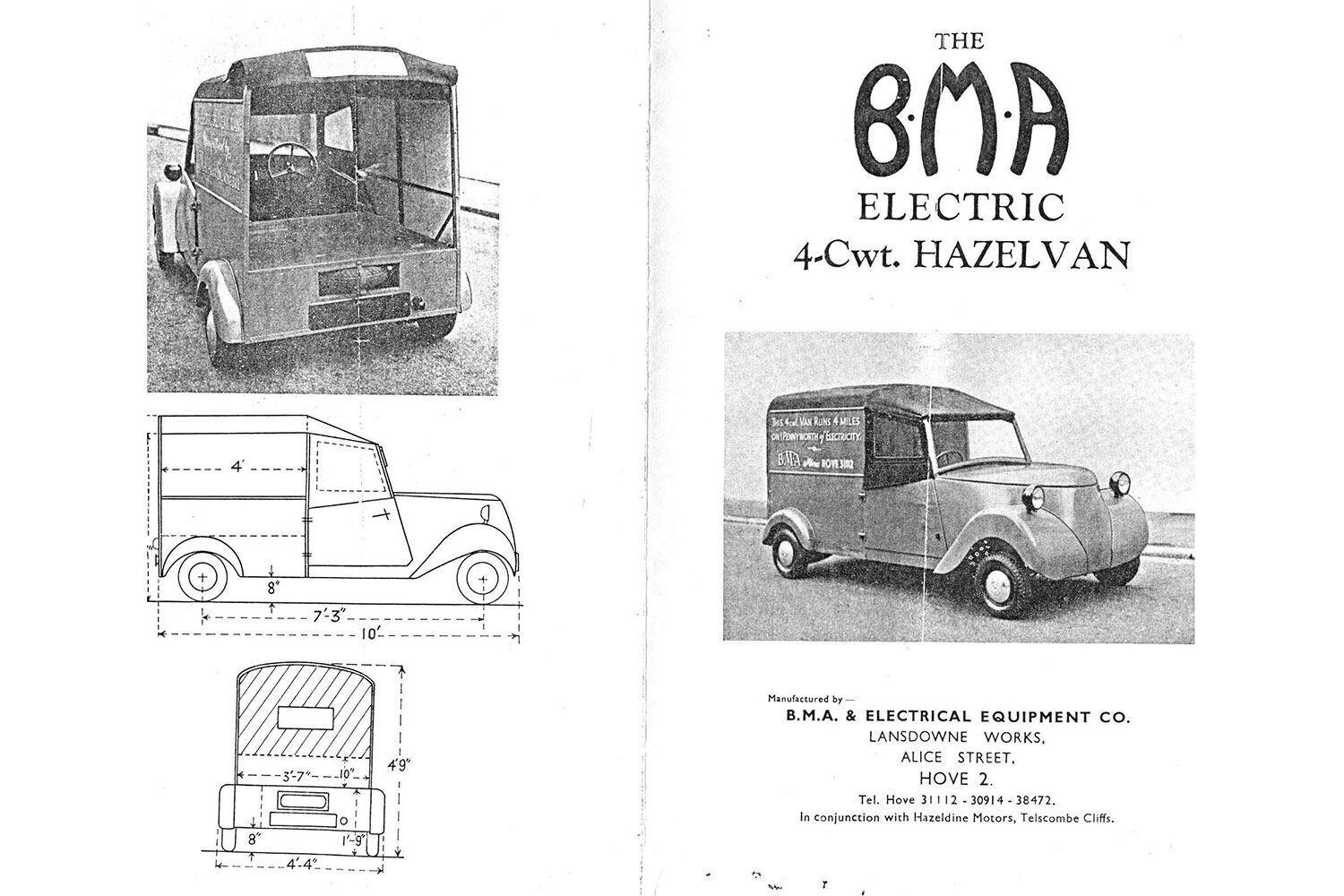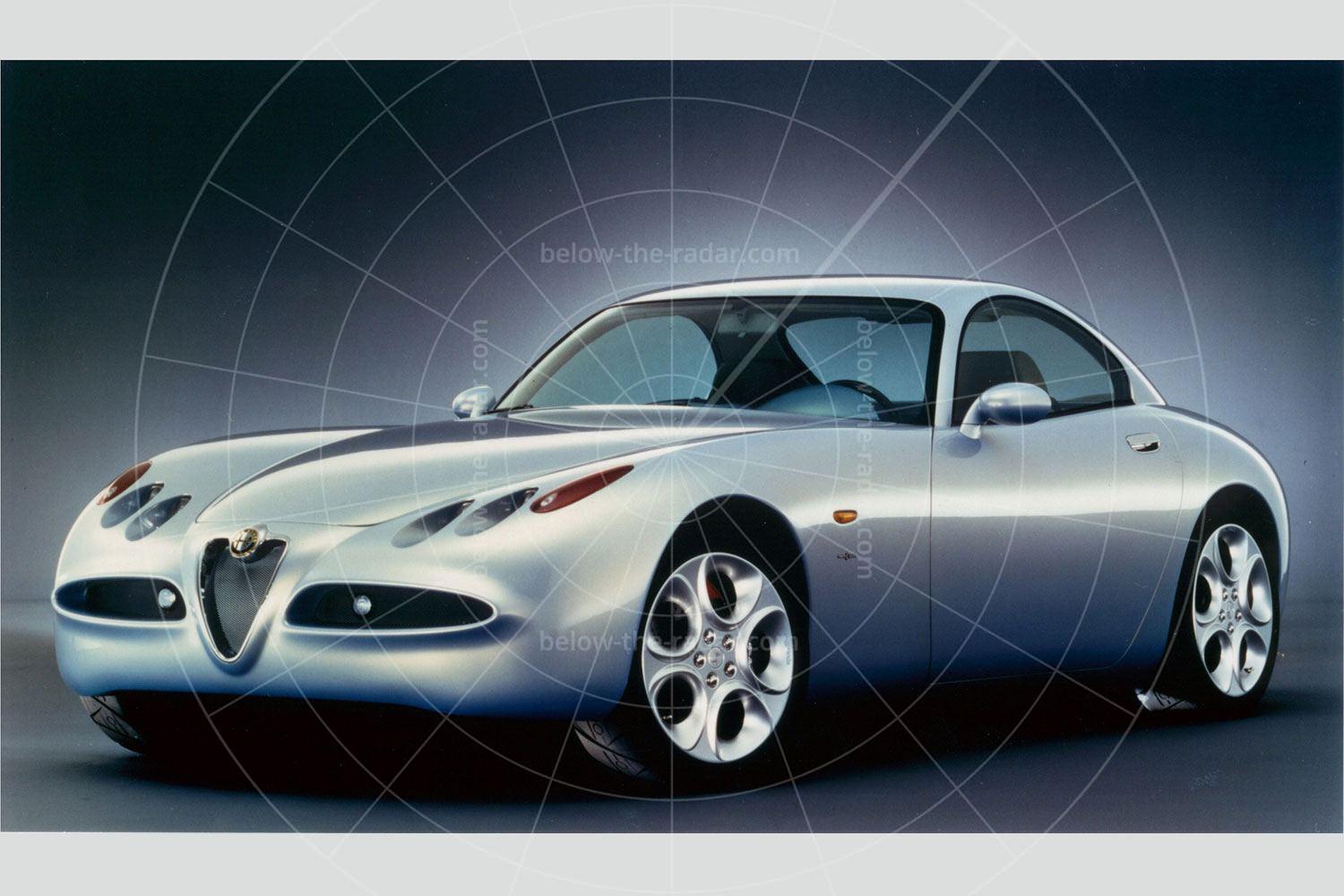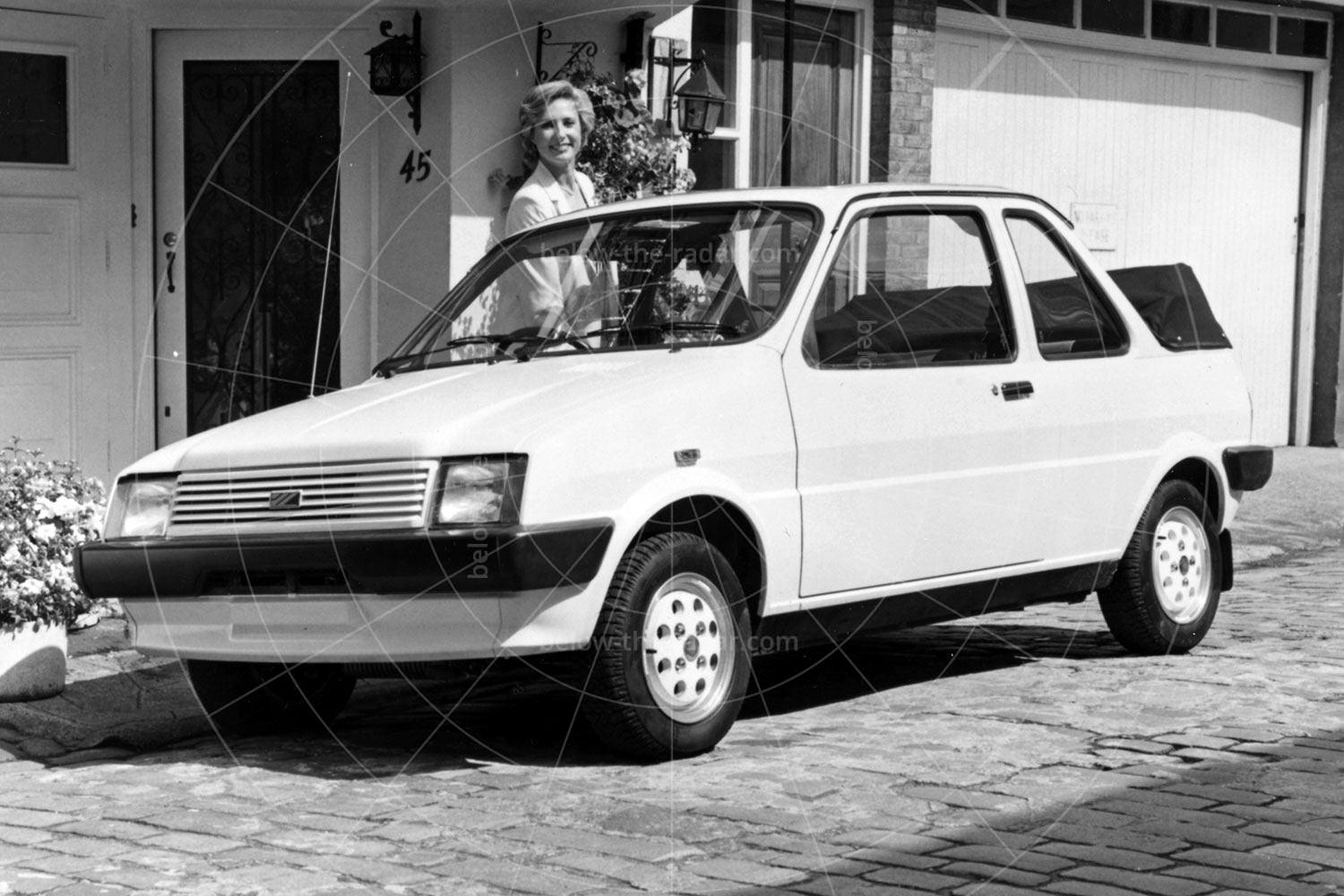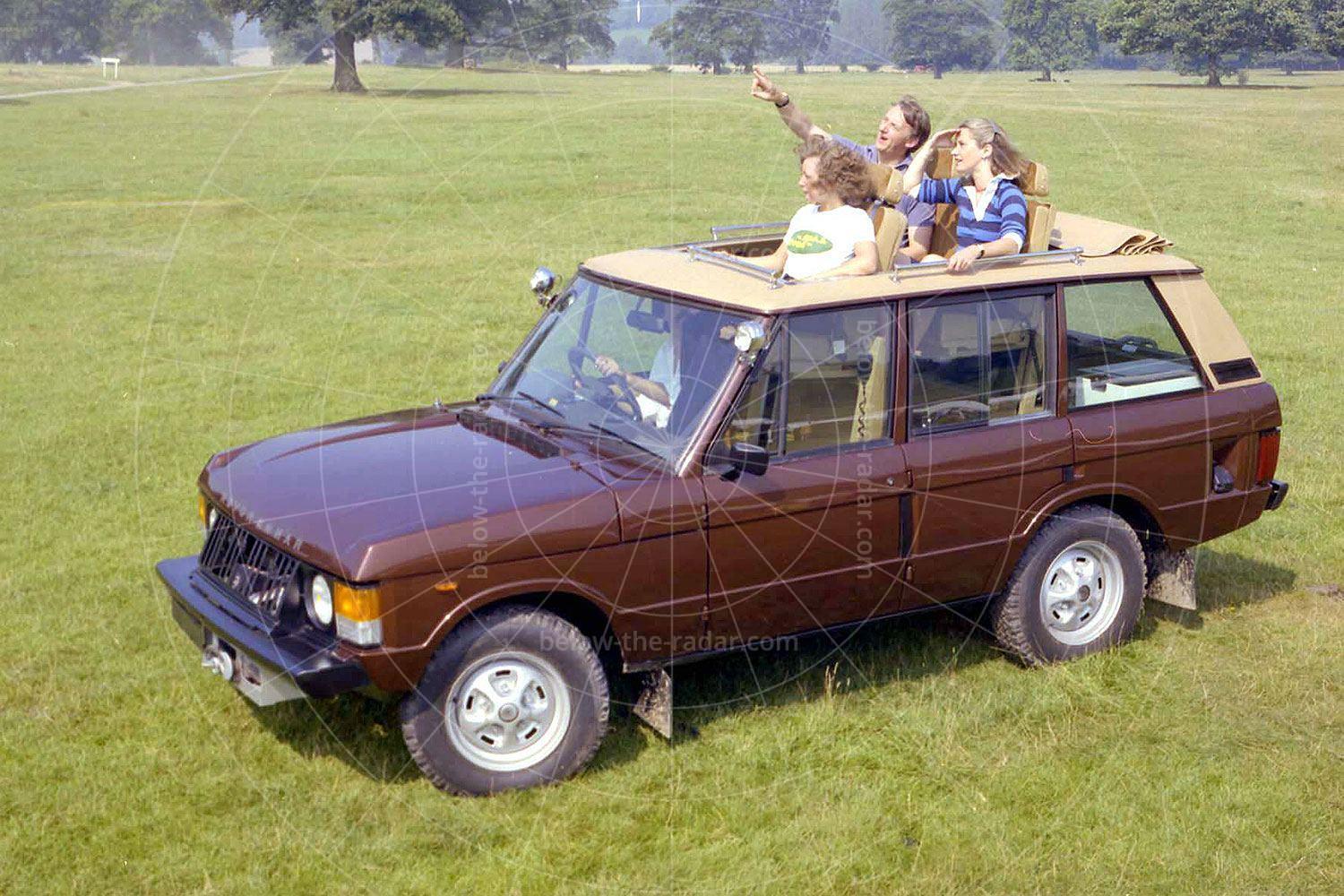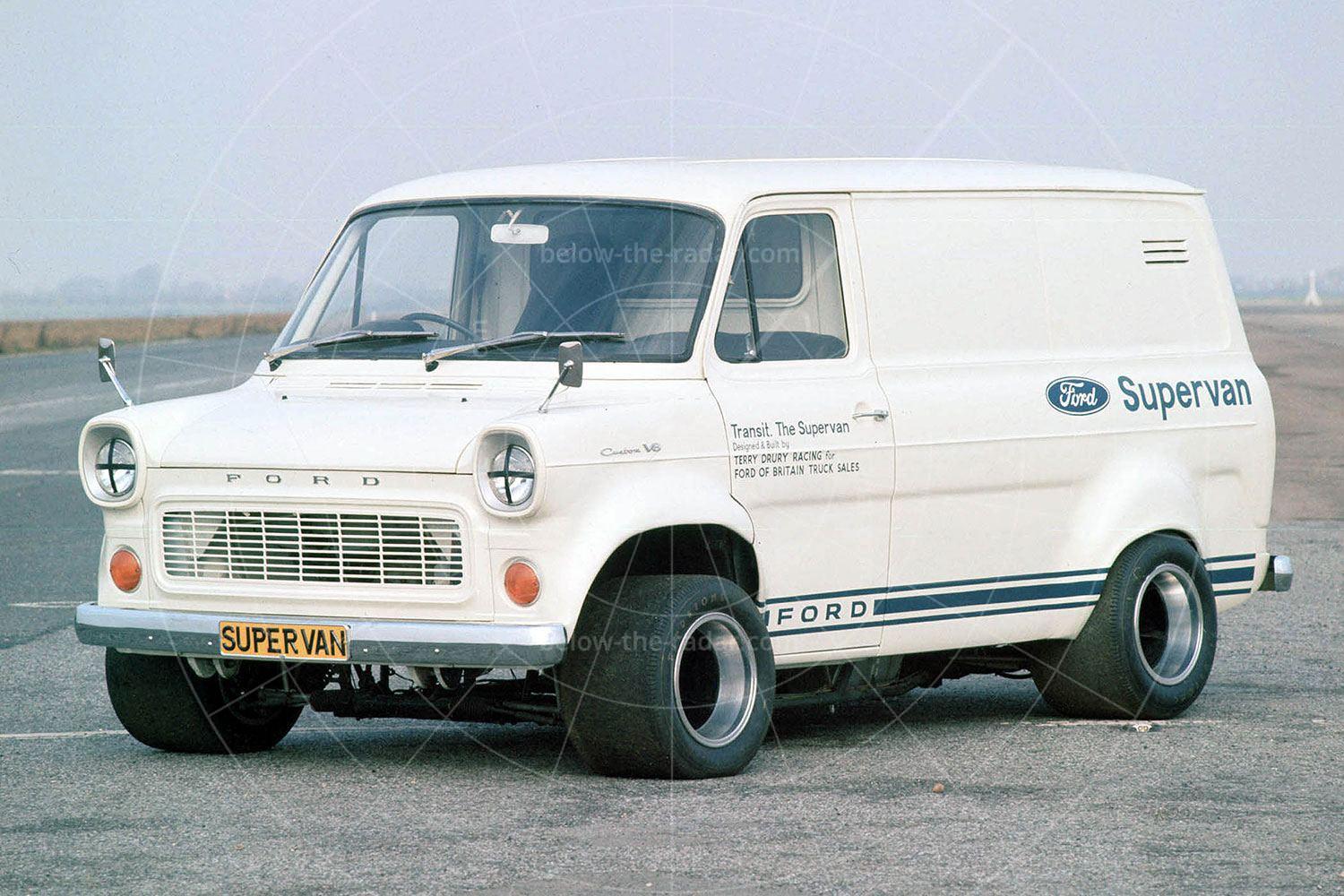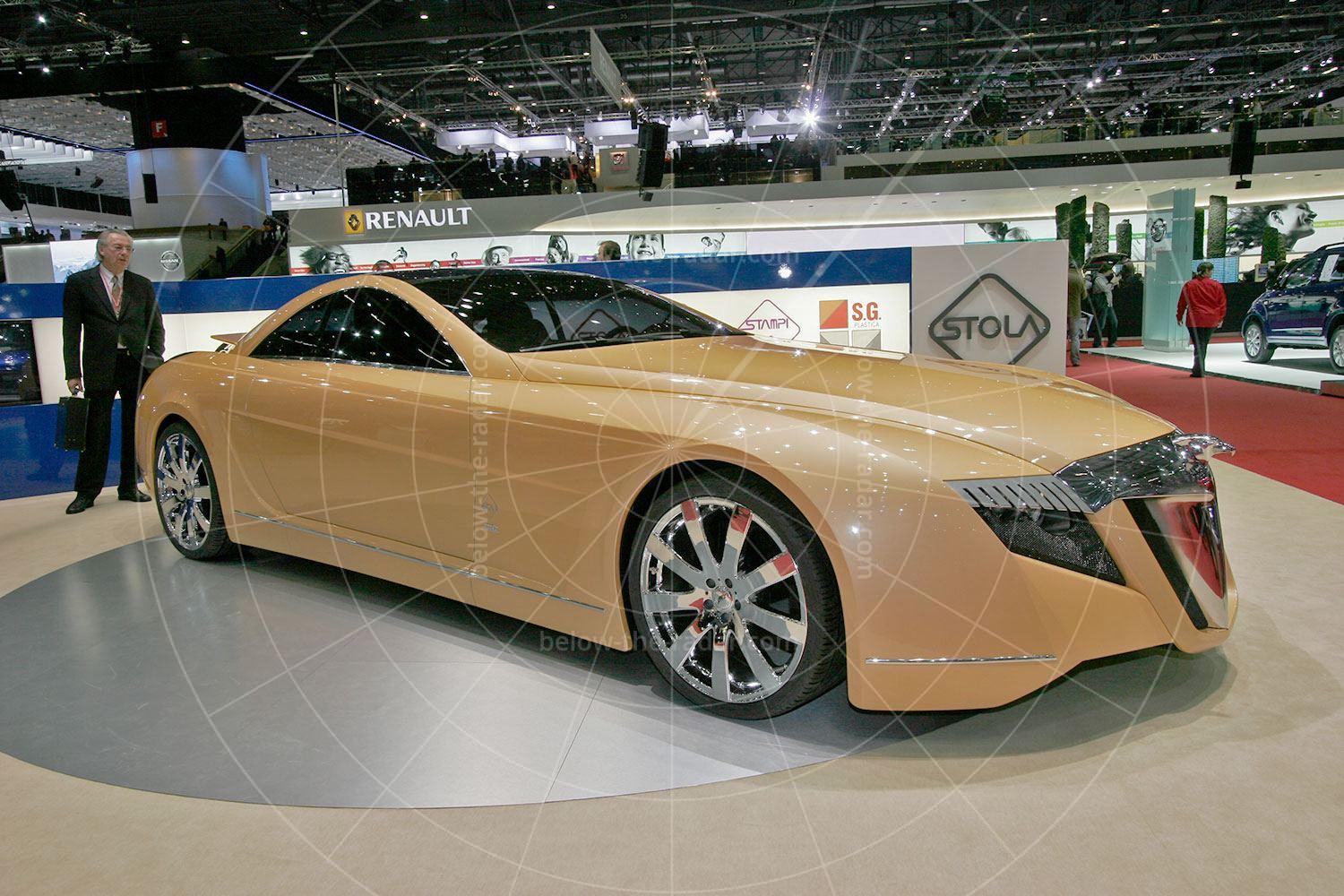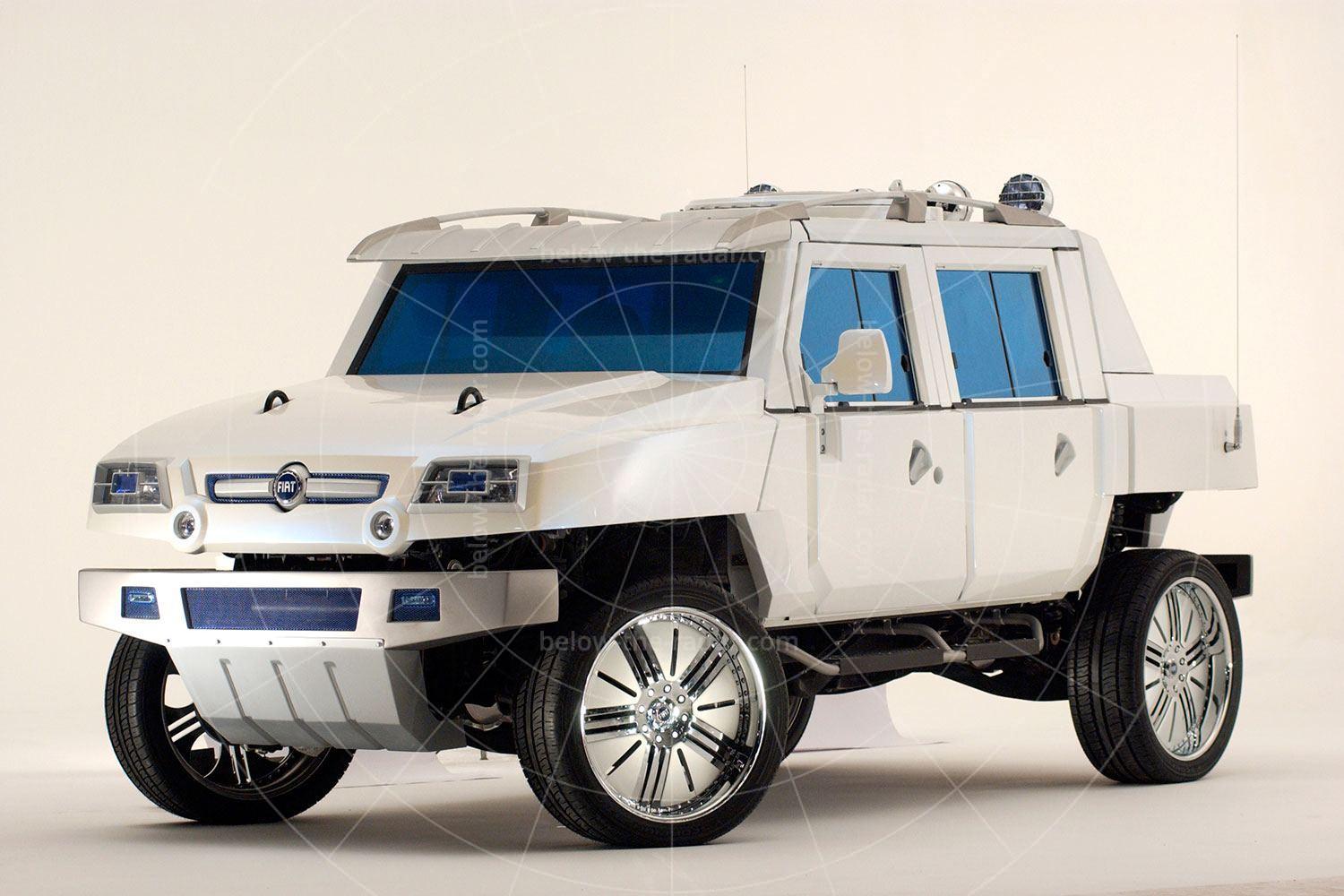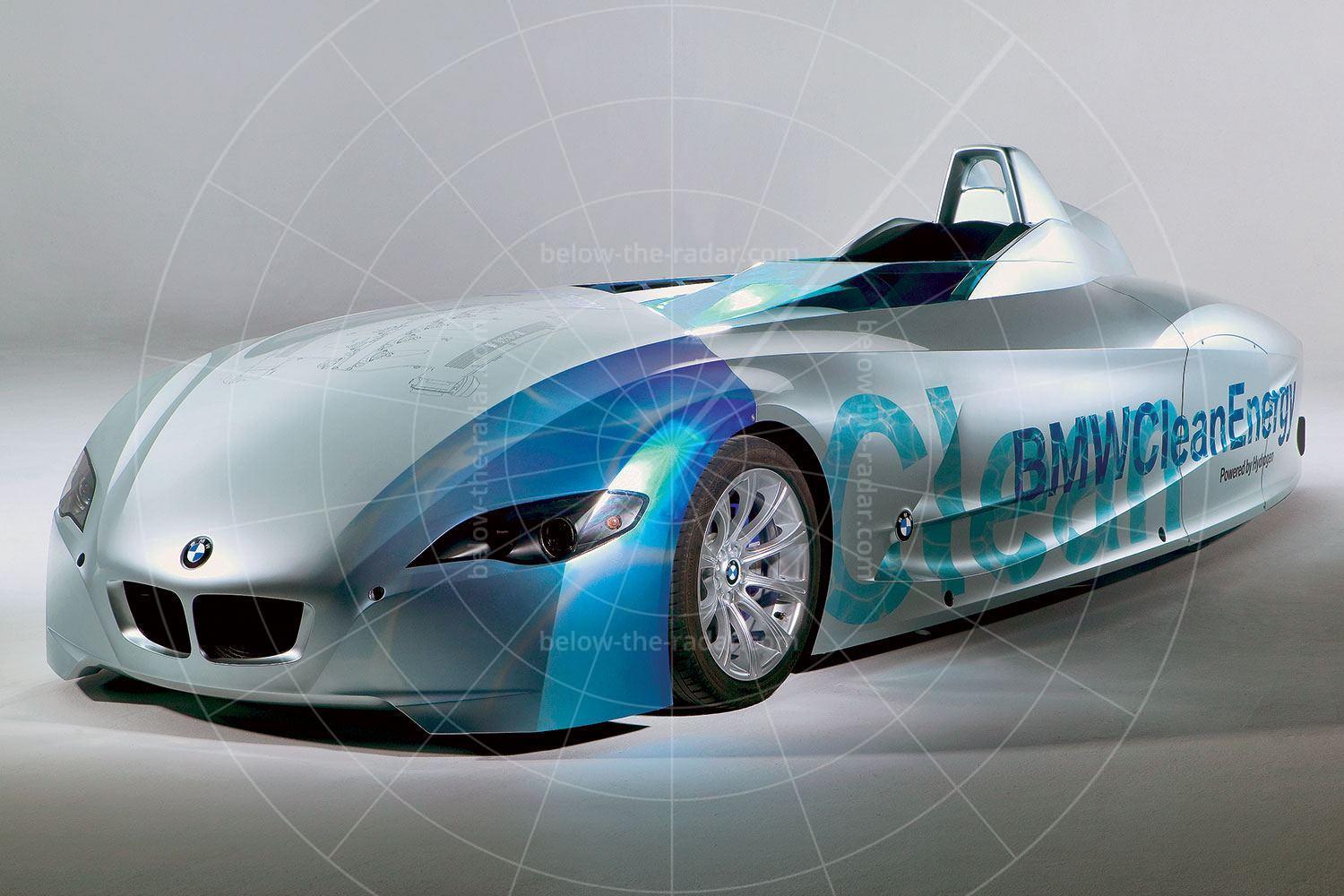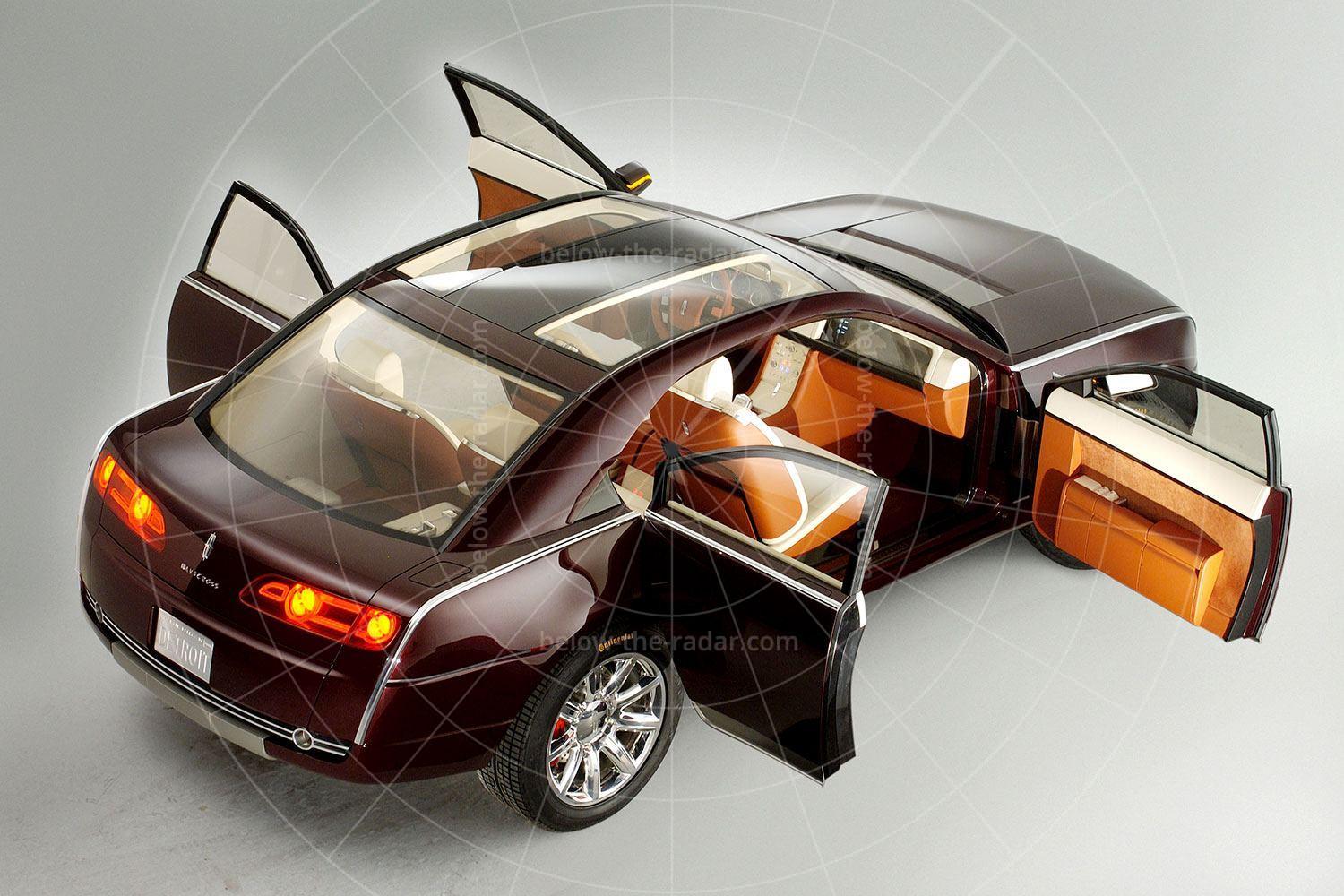Eric Hazeldene was on a ship returning to the UK from Africa in 1949, when he came up with the idea of producing a small car that could sell for just £100. Cheap to buy and also to run, his car would be powered by an Indian motorcycle engine which was readily available and cheaply available in large quantities. Two key targets were a top speed of 50mph and an average fuel economy figure of 50mpg.
Hazeldene's car would feature a channel-section steel chassis over which aluminium panels would be draped. There would be hydraulic brakes (taken from the Morris Minor MM), rack-and-pinion steering and beam axles at each end, suspended by quarter-elliptic springs with lever arm dampers at the rear, and telescopic dampers at the front.
Keen to make his dream a reality, Eric teamed up with his brother Roy to open a garage business in Saltdean, just outside Brighton. By the time the first prototype had been built in 1950, it quickly became apparent that the Indian flat-twin engine didn't have enough power so an alternative engine had to be found. After much trial and error it was decided that the ideal fit for the newly named Hazelcar was a Ford-sourced 933cc four-cylinder side-valve engine, which was compact but powerful enough to give the two-seater car (which weighed just 508kg) a claimed (and realistic) 60mph top speed.
Although the Hazelcar was awkwardly designed (from a 21st century perspective at least) it was well made and very usable. While the overall design looked a bit amateurish, what made it look especially comical was the eight-inch wheels. However, at just £350 (Purchase Tax made that £100 target an impossibility) the Hazelcar was the cheapest new production car available in the UK when it was officially launched in 1950.
In a bid to prove the build quality and reliability of the Hazelcar, Roy and Eric competed in the 1950 Daily Express 1000-Mile Reliability Trial which took place in November of that year. The car acquitted itself impressively and with its reputation buoyed by the exercise, the orders started to flood in. Within just a few weeks of the Trial, Roy and Eric were sitting on 60 orders. With production slated at one car per week initially, and 75 cars by the end of the first year, delivery times of more than six months were being quoted to those who were late in putting their name down.
Then things started to go wrong. The Korean War broke out and Ford could no longer supply its side-valve engine which meant fitting something else. The Hazeldenes tried Coventry Climax engines from mobile fire pumps, but they weren't powerful enough. The solution lay in going electric, and in 1952 a deal was struck with the Battery Manufacturing Association (BMA) to produce an electric vehicle. The result was the BMA Electric 2-Seater Runabout, as shown in the pictures here.
In place of the rear-mounted four-cylinder petrol engine there was a specially designed electric motor which peaked at about 1.5bhp. This was fed by nine 6-volt batteries, which lived in the nose. Drive was by a double-reduction chain from a four-speed gearbox with a switch-operated reverse.
Speeds of up to 20mph and a range of 60 miles were quoted, but as with many electric vehicles the actual performance varied greatly, being severely compromised by load and road gradients. At £535 the BMA Hazelcar was too expensive to sell in any quantity and although a van was also offered (called the Hazelvan, of which only two were sold), just a handful of Hazelcars were made before the Hazeldenes closed down their garage and Eric emigrated to Canada in 1952.
As is so often the way with these small-scale long-defunct operations, establishing accurate production figures is all but impossible. Many years ago Eric Hazeldene claimed that about 25 Hazelcars were made (and sold to countries as diverse as Ceylon, Switzerland and Denmark), of which maybe half a dozen were electric models. It's reckoned that a trio of BMA Hazelcars (the electric editions) still survive and a pair of petrol-engined cars.
| Vital statistics | |
|---|---|
| Produced | 1950-1952/3, England |
| Number built | 25 approx |
| Engine | Rear-mounted, 933cc, 4-cylinder |
| Transmission | 3-speed manual, rear-wheel drive |
| Power | 23bhp |
| Top speed | 60mph approx |
| Price | £350 |
- There's a website dedicated to the Hazelcar, at hazelcar.co.uk, which charts the complete history of the car and which also features pictures of the various Hazelcars produced.
- The BMA Hazelcar pictured was sold for $9200 by RM Sothebys in 2013. Many thanks to RM Sotheby's for the use of its pictures to illustrate this article.

